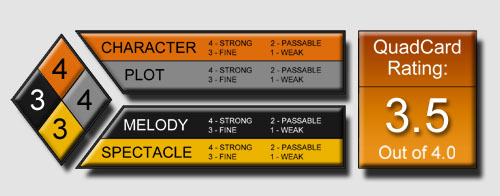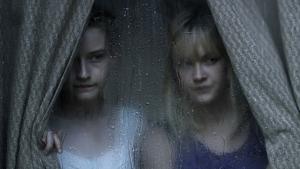
Last year, horror fans took part in the genre rumpus of Drew Goddard’s masterful The Cabin in the Woods, a movie that by design reminds us why we love horror in the first place. This year, We Are What We Are teaches a variation on the same lesson: it’s the sort of horror film that rewards the diligence and patience that comes part and parcel with true horror fandom. Dig through the mounds of garbage that comprise an average year’s release slate of cinematic skeletons, spirits, and haunts, and you’ll generally be rewarded with priceless gems for your troubles (though there’s a question as to whether it’s worth suffering through Aftershock to any end).
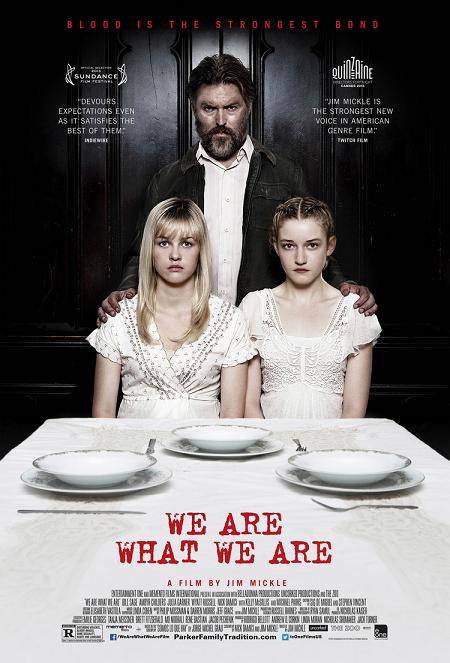 Such is the case for We Are What We Are, though there’s more to the film that makes it remarkable than the fact that it’s a watchable slice of horror. For one, it’s more than simply watchable; it’s downright mesmerizing. For another, it shatters the notion that all remakes – the single most prominent form of anathema to cinephilia – by nature must fall short of their source material, and challenges the idea that the horror label can only be placed on product that revels in the wanton slaughter of its primary, secondary, tertiary, and quaternary characters (and perhaps even a crew member or two). Put another way, We Are What We Are isn’t simply good in comparison to its peers: this is real deal, prime time genre product worth relishing.
Such is the case for We Are What We Are, though there’s more to the film that makes it remarkable than the fact that it’s a watchable slice of horror. For one, it’s more than simply watchable; it’s downright mesmerizing. For another, it shatters the notion that all remakes – the single most prominent form of anathema to cinephilia – by nature must fall short of their source material, and challenges the idea that the horror label can only be placed on product that revels in the wanton slaughter of its primary, secondary, tertiary, and quaternary characters (and perhaps even a crew member or two). Put another way, We Are What We Are isn’t simply good in comparison to its peers: this is real deal, prime time genre product worth relishing.
In telling the tale of the Parker clan, though, the film buys its scares with judicious frugality. When the family’s matriarch dies at the onset of a savage rain storm, her loved ones – husband Frank (Bill Sage), eldest daughter Iris (Ambyr Childers), middle child Rose (Julia Garner), and little Rory (Jack Gore) – find themselves forced to adapt to survive, which puts the burden of responsibility for maintaining hearth and home on the girls. That means caring for their dad, looking after their brother, and preparing the big meal that ends the religious fasting holiday of their birthright, though carving up another human being for stew meat adds a rather grisly layer to their freshly inherited duties. Think Yom Kippur, but with more cannibalism.
If the names Jorge Michel Grau and Jim Mickle mean anything to you, then your expectations for the film may come pre-built. Grau, of course, directed the original 2010 movie of the same name, a quietly, creepily good entry in the cannibal niche whose better qualities have been passed on and recommended through the grapevine in the intervening years. Mickle, on the other hand, directed Stake Land in the same year, evolving himself as a filmmaker beyond his solid 2006 debut, Mulberry Street, and taking tired, cliche monsters – vampires – and making something meaty out of them by dusting layers of glitter off of their blunted, disused fangs.
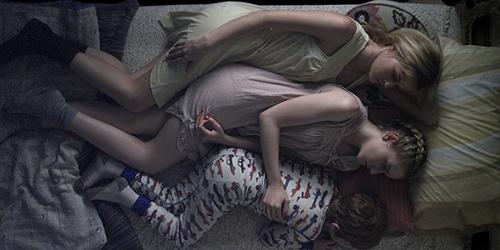
Here, he pushes himself even further, and if we can detect trace thematic elements between all three of his pictures that tie them all together, it’s the level of craft that separates them. You may not see a horror film in 2013 that’s shot so beautifully as We Are What We Are; cinematographer Ryan Samul captures the green belt idyll of the Catskills with an evocative calm that finds equal measure in Mickle’s eye for composition. Their dedication toward high artistry makes a great foil to the film’s enthusiasm for atmospheric chills at the expense of visceral fright, something that’s all but discarded until the third act rolls around and unleashes some well-earned carnage as a capstone to the piece.
Not to put too fine a point on things, but We Are What We Are isn’t your average horror movie. Mickle might even argue that it’s not a horror movie at all but rather a movie that crosses genre boundaries, though his narrative never fails to circle back around to what he finds scary. Staple horror villains have their uses, yes, and there’s a laundry list of reasons as to why they endure even today, but nothing cuts to the bone quite like the fears that define our real lives. Religious fanaticism is Mickle’s and regular partner-in-crime Nick Damici’s personal boogieman; Frank, as played by Sage, booms conviction like thunder, clinging fervently to traditions that are barbaric on their own merit and amplified by the absence of context. (The film kindly shows us via slightly clumsy but nonetheless effective flashbacks how the Parkers came to break their annual fast with human flesh.)
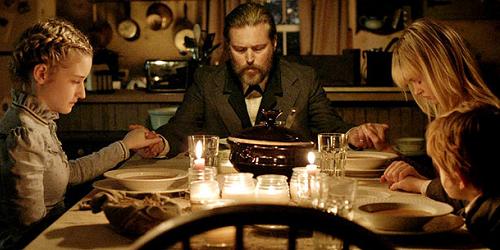
But if he’s a rigid believer, his daughters are less so, and that’s where We Are What We Are finds its drama. Despite Frank’s best efforts, Iris and Rose have become strong-minded young women under his care, and they see right through the cruel grotesqueries of his family values. Theirs is a conflict of nature versus nurture, though the trio also must contend with their unraveling privacy as a nosy neighbor (the always welcome Kelly McGillis) and the town’s haunted doctor (Michael Parks) start harboring suspicions that something’s not quite right in the Parker household. Maybe it’s Frank’s insular behavior, or maybe it’s the odd knuckle bone found among the flotsam of the swelling river running through their upstate New York hamlet.
G-S-T Ruling:
Mickle’s cast does wonders for him – the gentle Parks and the commanding Sage are at their very best, while Childers and Garner make the heartbreak of growing up fast shockingly palatable – but We Are What We Are adds up to something more than the sum of its impressive parts. It may be the best American horror film of 2013 that’s also distinctly American in its setting and in its themes; it isn’t a chest-thumping Amurrican movie, but it is a movie that’s about identifiably modern American experiences and anxieties. (If you think of hurricane Irene during the film’s opening sequence, you aren’t alone.) This is what happens when people write what they know and stitch the results together with superior filmmaking and great performances – the birth of thoughtful, restrained horror worth savoring.
